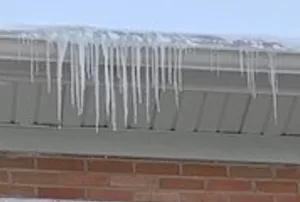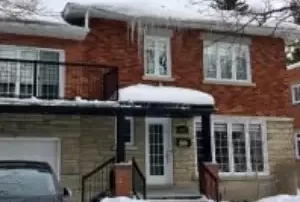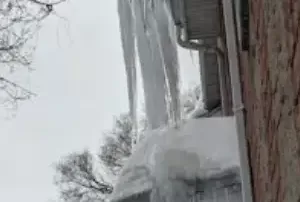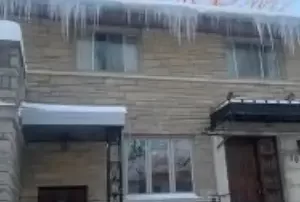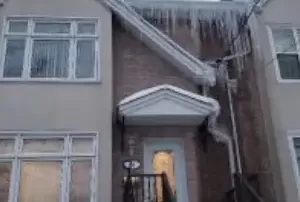Ice dams form on rooftops when melted snow flows and refreezes in gutters or along the edges of the roof. This situation is common in the regions of Longueuil, Montreal, and Laval. Over time, these dams can thicken and damage the roof, gutters, or even the structure of the house. It’s important to contact a specialist in attic insulation and attic & roof ventilation like RenovA+ to find out the reason and to resolve it, at the best price in town.
Several factors can cause ice dams, including inadequate insulation of the roof and improper attic ventilation. Contact RenovA+ for a free evaluation by calling 514-400-9946 and protect your property against harmful ice dam formation.
Get a price quote
514-400-9946
How to reduce ice dams?
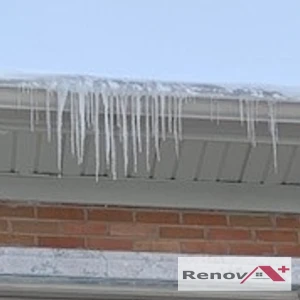 Don’t let ice dams harm the health of your roof. To prevent ice dams, it’s crucial to keep your roof clean and free from snow and ice as much as possible. This is where the RenovA+ team can assist you in managing meltwater that leads to ice dams. Take advantage of our professional service and expertise to enhance your attic insulation and attic inspection, preventing ice dam formation on your property, whether it’s located in the Longueuil, Montreal, or Laval region.
Don’t let ice dams harm the health of your roof. To prevent ice dams, it’s crucial to keep your roof clean and free from snow and ice as much as possible. This is where the RenovA+ team can assist you in managing meltwater that leads to ice dams. Take advantage of our professional service and expertise to enhance your attic insulation and attic inspection, preventing ice dam formation on your property, whether it’s located in the Longueuil, Montreal, or Laval region.
If you’re facing issues with ice dams on your roof, it’s advisable to consult a professional to assess the situation and suggest appropriate solutions. Contact our specialists today at 514-400-9946 for a quote and safeguard your roof from this phenomenon.
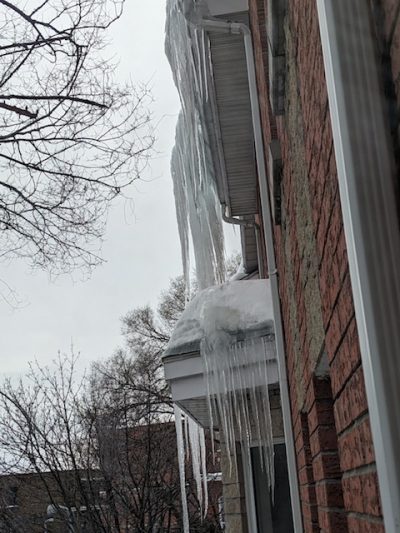
Get a free estimate for your attic and roof ventilation project in Longueuil, Montreal, Laval
☎ 514-400-9946
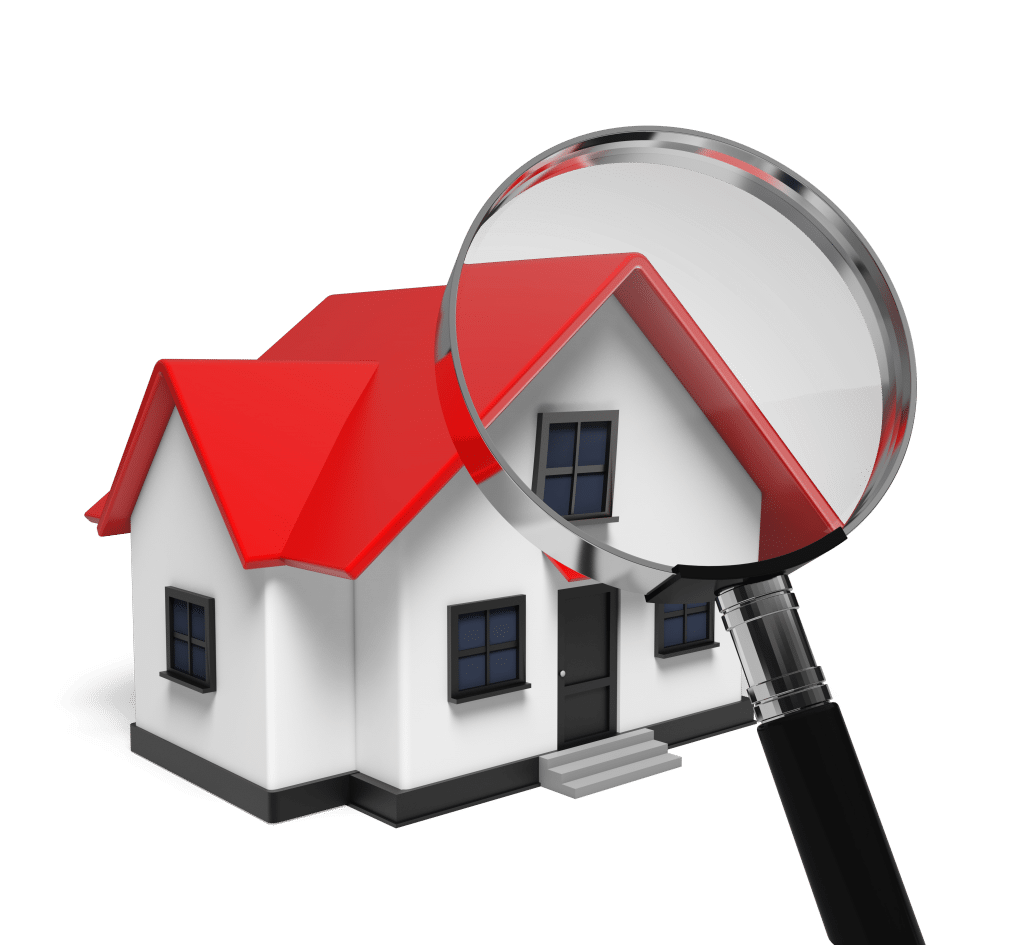
Frequently asked questions about attic ventilation and insulation
The best insulation for an attic depends on the type of roof and the space available. When it comes to the type of installation, blown or sprayed insulation has significant advantages over batt insulation, as it allows you to bypass obstacles such as electrical wires, recessed lights, ventilation pipes and the like, and then fill in the cavities near these various obstacles present in the attic. In addition, blown-in insulation in an attic allows for seamless insulation, which reduces points of weakness.
Here are the most common options for attic insulation:
- Cellulose insulation: Made from recycled paper and cardboard, this option is environmentally friendly, high-performing and one of the most affordable options on the market today. It is also easy to install, offers excellent thermal resistance and its density reduces air leakage and therefore heat loss. This type of insulation is particularly recommended for attics where the space under the slope is less than 17.5 inches.
- Fiberglass insulation: This blown-in option is similar to batt insulation in terms of thermal resistance. It offers lower thermal resistance than cellulose insulation, so it is important to have plenty of space under the slope in the attic. This type of insulation is much less dense than cellulose insulation, so it is important that all holes in the ceiling are well sealed. In terms of price, the increase in material prices for fiberglass insulation has been greater in recent years, making it less affordable than cellulose insulation.
- Mineral wool insulation: This batt insulation option is common among contractors who do not have the proper equipment to blow in insulation. Mineral wool is easy to install, affordable and offers good thermal resistance, but it leaves gaps between the batts that become weak points where heat and moisture can escape.
- Polyurethane foam insulation: This option is more expensive than mineral wool or fiberglass, but offers better thermal resistance. Polyurethane foam can also help seal air spaces and reduce air infiltration. It is the cream of the crop as a type of insulation, but its price is nearly four times higher than the previous solutions. Therefore, it tends to be used in strategic areas of the attic where weaknesses are noted. It is also used in cathedral roofs that have very little space and where it is important to create an air gap.
It is important to note that proper installation of the insulation is essential to ensure optimum performance. It is recommended that you hire a professional to install your attic insulation to ensure proper and effective installation.
A good insulation installer must have the skills and knowledge to perform a proper and effective installation of insulation. Here are some criteria that can help distinguish a good installer from a bad one:
- Knowledge of different insulation options and their characteristics: a good installer should be able to recommend the best types of insulation based on the specific needs and constraints of each situation.
- Knowledge of building code requirements and safety standards: a good installer must be familiar with insulation rules and regulations to ensure that the installation meets current standards.
- Ability to identify problem areas and weak spots: A good installer should be able to identify problem areas in the attic, such as areas of heat loss, weak spots and areas that may need attention.
- Equipment handling skills: a good installer must be able to handle insulation installation equipment, such as blowers and sprayers, competently and safely.
- Ability to install insulation evenly: a good installer must be able to blow or spray insulation evenly and consistently to avoid hot spots and chill zones.
- Ability to work cleanly: A good installer must be able to work cleanly, avoiding leaving debris and residue after installation.
In short, a good installer must be competent, experienced, knowledgeable and able to work safely and efficiently to ensure a successful installation of the insulation.
The price of attic insulation can vary widely depending on several factors, including the size of the area to be insulated, the type of insulation used, the method of installation and the complexity of the job.
In general, cellulose insulation is one of the most affordable options per square foot. Fiberglass insulation is generally a bit more expensive than cellulose, costing about 150% more than cellulose per square foot. Polyurethane foam insulation is often the most expensive, costing 2.5 to 6x more than cellulose per square foot.
These prices are provided as a guide only and may vary with changes in material costs. It is important to call on a professional, such as the certified team at RenovA+, to get an accurate quote for your attic insulation.
Regular inspection of your attic is essential to ensure the health and safety of your home, preserve its structure and save energy. It helps detect problems such as water leaks, insect or rodent infestations, structural damage and insulation problems. By taking prompt action to solve these problems, you can avoid costly long-term repairs and ensure the comfort of your home.
It’s recommended that you have your attic inspected at least once or twice a year, especially before and after the winter season. However, it’s essential to monitor the condition of your attic throughout the year, and to have it inspected more frequently if there are any apparent problems or significant changes.

